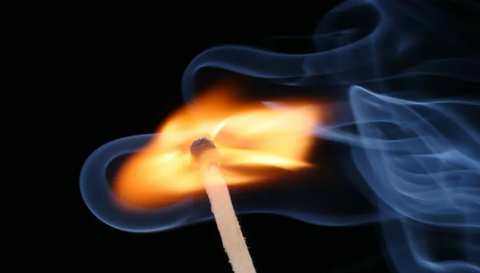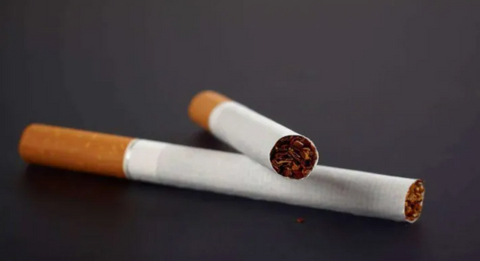
With the prevalence of e-cigarette culture around the world, the circle of domestic players is also slowly growing. At the same time, e-cigarettes also play a role as a healthy alternative to cigarettes and have gradually attracted widespread attention from smokers. Many smokers do not seem to have a deep understanding and understanding of electronic cigarettes, so there will be a lot of doubts. Today, the editor will take you to understand what is the ratio of cigarettes to e-liquid. How many cigarettes does 1ml of e-liquid equal?
Although the biggest commonality between electronic cigarettes and cigarettes is that they contain nicotine, the biggest difference is that, except for nicotine, electronic cigarette liquid (e-liquid) does not contain more than 2,000 other toxic and harmful substances in cigarettes, and cigarettes are harmful to the human body. It is not the nicotine that is most harmful and carcinogenic, but tar and carbon monoxide.
Nicotine common sense:
Nicotine, commonly known as nicotine, is an alkaloid present in plants of the family Solanaceae (Solanum genus) and an important component of tobacco.
Nicotine can be addictive or dependent (one of the most difficult addictions to break), and repeated nicotine use also increases heart rate and blood pressure and reduces appetite.

When nicotine enters the body, it will be transmitted through the blood and can pass through the blood-brain barrier. It only takes an average of 7 seconds to reach the brain after inhalation. The half-life of nicotine in the human body is about 2 hours. The amount of nicotine obtained by the body through smoking is affected by many factors, including the quality of the smoke, whether to inhale, and whether to use a filter. The efficiency of nicotine entering the body is higher through chewing, mouth, and inhalation of tobacco, which is contained between the lips and gums and directly inhaled through the nose. The liver is the organ that primarily metabolizes nicotine.
Nicotine can increase the number of neurotransmitters, increase the amount of dopamine in the brain, produce a sense of well-being and relaxation, and finally may cause addiction due to smoking.

Harmful components of cigarettes:
Harmful components in cigarette smoke include carbon monoxide, alkaloids such as nicotine, amines, nitriles, alcohols, phenols, alkanes, alkenes, carbonyl compounds, nitrogen oxides, polycyclic aromatic hydrocarbons, heterocyclic compounds, and heavy metal elements.
They have a variety of biological roles, including:
- Inflammatory stimulation to the respiratory mucosa: such as aldehydes, nitrogen oxides, and olefins.
- Toxic effects on cells: such as nitriles, amines, and heavy metal elements.
- Addictive effects: such as nicotine and other alkaloids.
- Carcinogenic to the human body: such as benzopyrene of polycyclic aromatic hydrocarbons, cadmium, dimethylnitrosamine, β-naphthylamine, etc.
- It has a cancer-promoting effect on the human body: such as phenolic compounds.
- Make red blood cells lose their ability to carry oxygen: such as carbon monoxide.
A variety of carcinogens that make up tobacco tar are carcinogenic initiators when the inhaled amount reaches a certain level, and carcinogenic agents and synergistic carcinogens can accelerate carcinogenic effects.
Nicotine Replacement Therapy
Nicotine replacement therapy is a form of non-tobacco, low-dose, and safe nicotine preparation to replace nicotine in tobacco. The nicotine it provides is less than that obtained by smoking, but it is enough to reduce withdrawal symptoms. After using it for a while, smokers who quit The intake of nicotine is gradually reduced to the minimum, and then the habit of smoking can be overcome to achieve the goal of successful smoking cessation.
Nicotine replacement therapy is an effective "smoking cessation method" recommended by the World Health Organization because through nicotine replacement therapy, it can not only satisfy the addiction to smoking, gradually reduce the dosage, but also avoid the harm of tar, carbon monoxide, and other toxic and harmful substances in tobacco to the human body. It is an effective and safe method, which is why it has been recognized internationally. It also shows from the side that tar and carbon monoxide are more harmful to the human body than nicotine.
What is the ratio of cigarettes to e-liquid? 1ml of e-liquid is equivalent to how many cigarettes?
Nicotine is not the real "culprit" of cancer, but it cannot be abused because e-cigarettes do not have tar or carbon monoxide. There have been many cases of poisoning caused by the abuse of nicotine in foreign countries, so it is still necessary to understand the conversion between the concentration of e-liquid and cigarettes according to your actual situation.
If the nicotine content of each cigarette you smoke is 1.1 (nicotine content = nicotine content, there will be a mark on the left side of the cigarette pack), then it is as follows:
1.1 x 20 pieces = 22 mg. The average person consumes about 2-4 ml of e-liquid a day. If it is 2 ml a day, it is recommended to choose 11 mg of e-liquid. According to the above statement, you can make a recommendation, how many milliliters do you smoke?
At present, the nicotine content of domestic cigarette smoke, that is, the nicotine content in smoke is 1.1 mg per piece. If the concentration of e-liquid is 6 mg/ml, then one milliliter of e-liquid is approximately equal to the nicotine content of five cigarettes. If the concentration of e-liquid is 3mg/ml, then one milliliter of e-liquid is approximately equivalent to the nicotine content of three cigarettes.
The vast majority of people consume about 3-5ml of e-liquid per day. Even if the concentration is 6mg, it is equivalent to the nicotine content of 16-27 pieces of cigarettes per day. Moreover, many heavy smoke players consume more e-liquid every day. Based on the average daily concentration of 15ml and 3mg, it is equivalent to the nicotine content of 41 pieces of cigarettes.
A normal person, who inhales such a large number of cigarettes every day, his body will feel uncomfortable and cause great harm to his health, because in addition to nicotine, cigarettes also contain tar, carbon monoxide, and other toxic substances. But for e-cigarettes, e-liquid only contains nicotine, without the tar and other substances in cigarettes, so such a conversion has no practical significance.
But you can’t abuse e-cigarettes just because of this. After all, excessive inhalation of nicotine can also cause poisoning, so please be restrained. Once reactions such as "dizziness", "chest tightness" and "nausea" occur during the use of e-cigarettes, it means excessive intake of nicotine. At this time, you should stop using electronic cigarettes, ventilate, breathe fresh air, and drink plenty of water. If the symptoms are severe, you need to seek medical attention in time.
In addition, the e-liquid must be kept properly, because the whole bottle of e-liquid contains a lot of nicotine. Taking the concentration of 30ml and 6mg as an example, a bottle of e-liquid contains 180mg of nicotine. If it is accidentally eaten by infants or pets, it will cause very serious consequences. Moreover, the taste of e-liquid is mostly very sweet, similar to the taste of drinks and pastries. If it is not placed properly, it is easy to be swallowed by mistake.



